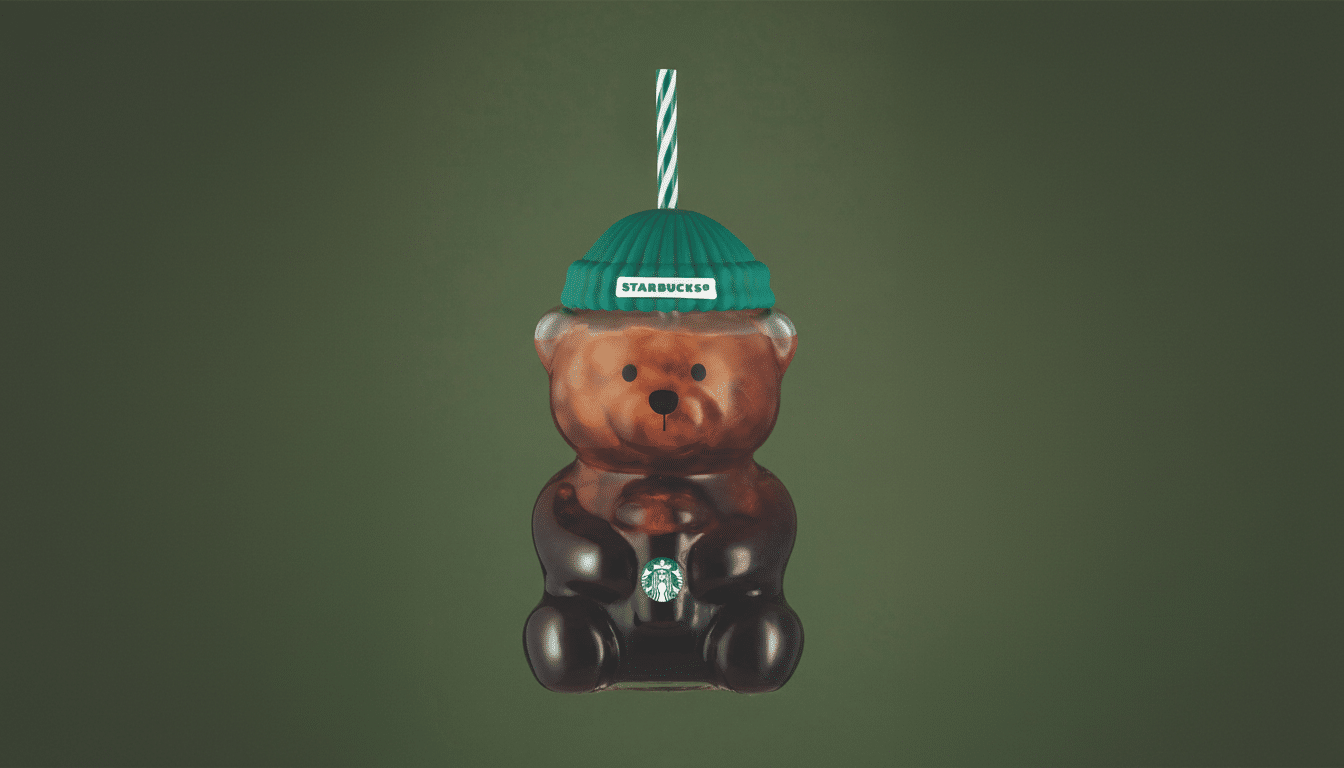The latest holiday merch drop from the coffee giant has been a hit overnight, with the Bearista Cup being sold out in hours and causing a resale rush. The beanie-topped, bear-shaped cold cup has transformed everyday coffee runs into high-stakes scavenger hunts — and social feeds into channels of unboxings, complaints, and triumphant hauls.
What the Bearista Cup Is All About: Features and Design
It’s a 20-ounce clear glass cold cup cut in the likeness of a teddy bear, with a green candy cane-striped straw and a lid that doubles as a knit hat.
- What the Bearista Cup Is All About: Features and Design
- How the Sellouts Happened at Many Starbucks Stores
- The Resale Wave Strikes With Sky-High Markups
- Why a $30 Cup Became Essential for Holiday Shoppers
- What Starbucks Says About Demand and Availability
- What to Watch Next for Buyers, Collectors, and Fans

Priced around $30 at launch, the design addresses Starbucks’ own long-running “Bearista” lore — a reference to the collectible bears that the brand began selling during the late 1990s — but leans into today’s cute-core aesthetic that reigns over TikTok and Instagram.
How the Sellouts Happened at Many Starbucks Stores
At many stores, by the time baristas opened the doors, the cup was no more. Social media posts on TikTok and Reddit describe locations that received only a few units, with some customers accusing workers at these stores of buying up cups prior to opening. Store policy can vary, but special-edition drinkware often comes in very limited quantities, and scarcity can go a long way toward creating demand once social video amplifies the drop.
Shoppers, in numerous clips that garnered hundreds of thousands of views, recorded early morning lines, shelves emptied just minutes after opening, and tense exchanges at the register. It was less coffee run, more streetwear drop — quick, competitive, and occasionally confrontational.
The Resale Wave Strikes With Sky-High Markups
Within hours, listings for the product on major resale marketplaces were posted at eye-watering markups. A scan of recent postings reveals asks cresting somewhere around $600, while completed sales settle into the $400 range for a sealed cup. That puts the Bearista in the aftermarket conversation with previous viral drinkware predecessors, like Stanley collabs and seasonal colorways, both commonly fetching three-digit premiums when supply is scarce.
This pattern holds for broader collector behavior, as when a product is cute, photogenic, and perceived to be limited, it becomes social currency. The cup isn’t just a receptacle; it’s a signifier — evidence you were early, lucky, or had access.

Why a $30 Cup Became Essential for Holiday Shoppers
More than design, the Bearista accesses two other forces. First, the drop culture: time-boxed releases and small-store allocations that generate a “now or never” urgency modeled on sneakers and streetwear. Second, the psychology of small luxuries. Consumer researchers frequently cite the “lipstick effect” — that shoppers turn to cheap treats during periods of economic uncertainty. Companies like Circana and McKinsey have reported that, even as budgets shorten, consumer interest in low-ticket indulgences is holding strong — the profit model underpinning cozy, collectible drinkware to a T.
Nostalgia also plays a role. (The Bearista lineage also means the cup comes with built-in lore, attracting both seasoned fans who remember the plush bears and newer collectors who want to own a slice of brand history in a millennial-friendly format.)
What Starbucks Says About Demand and Availability
The company recognized the surge, telling People that demand soared well beyond internal projections. A spokeswoman said more Bearista Cups were sent to stores than virtually any other holiday merchandise item, but many locations quickly ran out. The brand apologized for shortages and teased more seasonal items on the horizon, suggesting that the holiday merch cadence will continue whether or not a full restock is assured.
What to Watch Next for Buyers, Collectors, and Fans
Expect a few predictable aftershocks.
- Secondary market prices usually start high and cool as initial hype fades; smart buyers are looking at completed sales, not list prices.
- Counterfeits are likely; fans should check details such as glass clarity, lid fit, and even how the straw is striped.
- Surprise mini-restocks — short, unannounced, and just as viral — may come via later shipments or local redistributions.
(For anyone who missed out, other seasonal collections — such as brand partnerships and character-themed drinkware — are already hitting shelves.) But if the Bearista shows anything, it is that the combination of design, nostalgia, and a little scarcity can transform something as simple as a cup into the season’s most hotly contested stocking stuffer.

